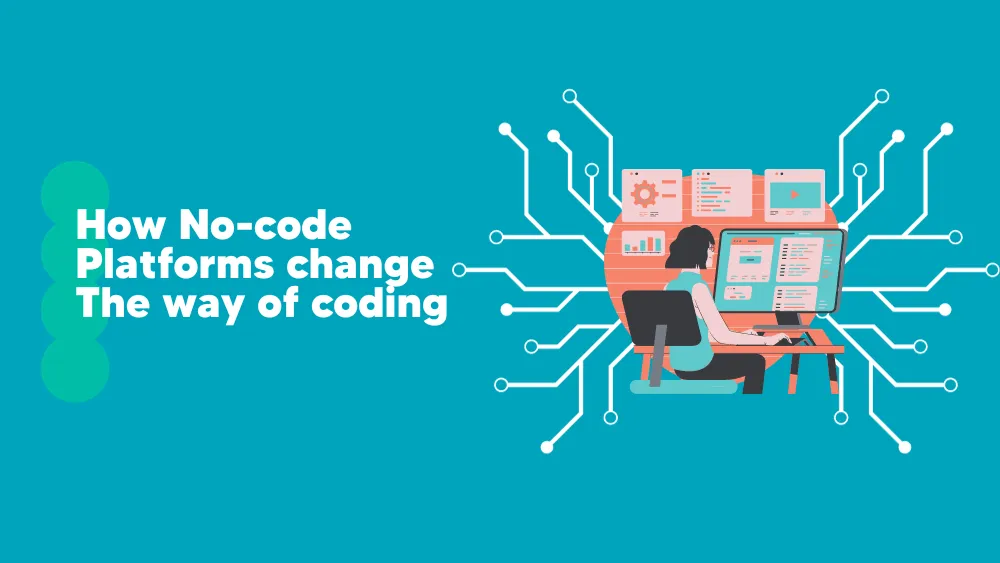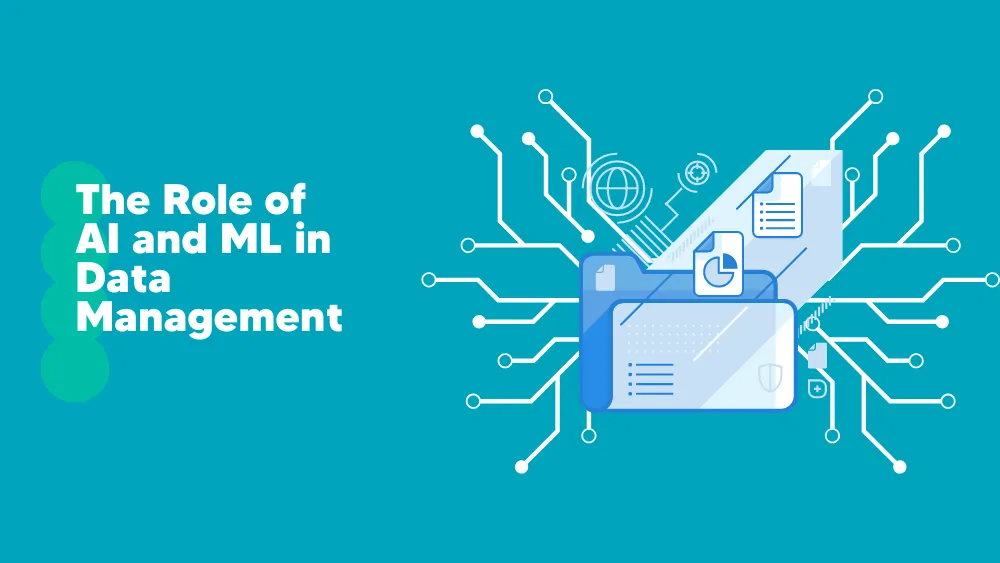Table of Contents
When platforms like WordPress or Formstack emerged, they ignited a coding revolution by posing a simple question: ‘Why slog through code when you can just… not?'” This wasn’t merely a rhetorical musing. They introduced a transformative approach to building online platforms, apps, and digital interfaces. These no-code solutions, especially emerging no-code SaaS platforms, democratized the domain of digital development, allowing a more comprehensive range of people to create, innovate, and participate without needing a deep understanding of traditional coding languages.
Here, we delve into the how and why of this shift, the benefits it brings to the table, and its potential implications for the broader tech ecosystem. Whether you’re deeply embedded in the tech world or just someone intrigued by the noise these platforms are making, this exploration promises clarity.
What are No-Code Platforms?
No-code platforms like PROCESIO provide a user-friendly interface for building digital products without coding expertise. The most apparent features of such platforms are as follows:
- Visual Interfaces: One of the standout features of no-code platforms is their intuitive visual interface. Users are typically greeted with a user-friendly dashboard graphically representing all project elements. There are no dark screens filled with alphanumeric characters, just a vibrant space where you can see your creation’s structure and design.
- Drag-and-Drop Capabilities: The beauty of no-code platforms lies in the functionality of drag-and-drop builders. Want a button here? Just drag it. Need a form there? Drop it in. This tactile approach demystifies the creation process and makes it accessible even for those who’ve never ventured into digital creation.
- Integrations: No platform is an island. No-code solutions typically offer a plethora of integrations with other tools and platforms. No-code platforms ensure seamless integration if you need to connect with an e-commerce system, a CRM, or a marketing automation tool.
- Hallmarks of No-Code: Beyond the above, no-code platforms often come with pre-built templates for various industries, allowing users to kick-start their projects. They also prioritize mobility, ensuring your creation is responsive and looks great on any device. Plus, scalability and security are often baked right in with the cloud’s power behind many of these platforms.
Why No-Code Platforms Are the Heart of the Coding Revolution
Businesses need tools that allow them to respond swiftly to ever-changing demands – No-code platforms are, without a shadow of a doubt, such a tool. These platforms are redefining how we approach tech challenges, offering efficient alternatives to traditional development methods. Here’s a deeper look into the superpowers these development platforms bring to the table:
Accelerated Productivity: No-code’s Promise
The harsh truth is that consumers aren’t waiting for you. If they want your product, they want it yesterday. Traditionally, developers might have felt compelled to trade function for speed just to satisfy this demand and make something that comes out … unsatisfactory.
But with no-code platforms, you get the power of a rocket engine without its complications. These platforms offer rich functionality and, dare we say, warp speed, transforming projects from mere ideas to tangible products in no time. The seamless visual interfaces help translate visions into realities without the usual hiccups, ensuring you stay ahead of the curve.
Collaboration: Say Goodbye to Lost-in-Translation Woes
Have you ever played the game of Chinese whispers? Traditional app development can sometimes feel a bit like that. Business leaders have a vision that gets passed down the chain, losing some essence. By the time it reaches the IT teams, it’s an entirely different beast altogether.
No-code platforms, however, bridge this communication chasm. They are a transparent canvas where everyone, from business leaders to IT experts, can paint their ideas in real time. Everyone is in the loop, and everyone can contribute. It’s collaboration at its zenith, ensuring the final masterpiece reflects everyone’s input.
Accessibility: Breaking Down the Ivory Towers
Historically, IT seemed like a secret club with a very complex handshake. Only those with specialized knowledge could enter. This often led to bottlenecks and a deluge of backlogged projects as a few overburdened IT souls tried to keep up with a torrent of demands. No-code platforms, however, have thrown open the club doors – the Rosetta Stone of tech has translated complex jargon into a language everyone understands. The result? More hands on deck, smoother workflows, and reduced project queues drastically.
Flexibility: Craft As You Envision, Without the Chains
No-code platforms provide significant flexibility. Unlike traditional software development, which may limit you to predefined structures and capabilities, no-code allows for adaptable and fluid design. Your data and design aren’t confined, allowing you to create as you see fit. No more wrestling with pre-defined entities or losing sleep over legacy code structures. With their schema-free databases, no-code platforms are dynamic playgrounds, allowing for swift pivots and easy modifications. It’s innovation without inhibition.
Cost Savings: Efficient Today, Economical Tomorrow
Legacy code is a type of code that might be outdated or inefficient but is still operational. Maintaining and updating this code in traditional development can be resource-intensive, often leading to continuous investment just to keep systems running.
No-code platforms present an alternative. Without the burden of managing legacy code, platforms like Unqork allow for creating custom applications without any coding hassles. Moreover, they can integrate with and potentially optimize existing systems. This leads to faster product deliveries, decreased maintenance costs, and a greater capacity to concentrate on proactive innovation.
3 Ways in Which No-Code Platforms Impact on Traditional Coding
Complementary, Not Competitive
No-code platforms are not necessarily a replacement for traditional coding; they complement it. While no code can facilitate rapid development for specific tasks, traditional coding remains essential for more complex and tailored solutions. No code handles generalized tasks efficiently, whereas traditional coding provides detailed customization and specificity where required.
Shift in Developer Roles
The introduction of no-code platforms changes the landscape of development roles. Developers may be less involved in building basic functionalities, which can be expedited through no-code platforms. Instead, their expertise will be redirected to concentrate on advanced functionalities, integrations, and complex problem-solving. This doesn’t diminish the value of developers; instead, it allows them to apply their skills to higher-level challenges.
Coding Education
The rise of no-code platforms and the ongoing Low-code vs. No-code debate suggest an evolution in how coding is taught and understood. While the foundational knowledge of programming languages remains essential, there’s an increasing emphasis on cultivating broader skill sets. This includes problem-solving, understanding complex logic, and specializing in areas that no-code solutions, such as advanced algorithms or cybersecurity nuances, cannot easily replicate.
Limitations and Concerns
As with all technologies, no-code platforms come with their own set of challenges and considerations. Understanding these limitations is crucial to make informed decisions about their use.
-
Scalability
No-code platforms are a godsend for rapid development and prototyping, but questions arise when considering scalability for larger enterprises. Can these platforms handle the demand as businesses grow and user loads increase? Some no-code solutions might struggle to manage high-traffic or large-scale data processing, potentially causing performance issues or bottlenecks. Businesses need to assess the scalability of their chosen platform and ensure it aligns with projected growth.
-
Customization
The strength of no-code platforms lies in their user-friendly tools and templates. However, this can also be a double-edged sword. While they cater to a broad range of needs, there may be instances where the platform falls short in providing the precise customization an organization requires. Unlike traditional coding, where every nuance can be tailored, no-code platforms might sometimes offer a more generalized solution, which may not fit specific niche requirements.
-
Dependency
Relying heavily on no-code platform providers introduces a dependency concern. What happens if the platform provider decides to change its pricing structure, modify its features, or, in worst-case scenarios, shut down? Businesses could find themselves in a precarious position, having built essential systems on a platform they have little control over. This dependency also brings up questions of data ownership, platform security, and potential migration challenges if a switch becomes necessary.
Beyond Today: The Expanding Horizons of No-Code Innovation
As we journey further into the digital realm, the relationship and interplay between no-code platforms and traditional coding promise to reshape the landscape of digital innovation.
Integration with Advanced Tech is on the horizon. Picture this: soon, even without delving into intricate code, innovators could design immersive AR/VR experiences or embed AI-driven functionalities into their projects. No-code platforms, ever-evolving, will make cutting-edge technologies more accessible, bringing futuristic concepts into present-day realities.
The Market Growth of no-code solutions signals a shift in the broader industry perception. These platforms aren’t merely tools for the tech-savvy but transformative agents. From healthcare establishments to bustling financial hubs, sectors across the board are tapping into the potential of no-code, underscoring its pivotal role in the digital transformation journey.
But what’s most riveting is the future of Collaboration. Instead of a distinct divide, envision a world where traditional coders and no-code enthusiasts join forces. The complex intricacies of back-end operations, crafted by coders, mesh seamlessly with the intuitive front-end designs of no-code aficionados. This synergy, a blend of depth and agility, could set the stage for projects we’ve only dreamed of.
Conclusion
No-code platforms signify a pivotal shift in the digital development realm. By removing barriers to entry and democratizing application creation, these platforms have ushered in a new era of accessibility, efficiency, and innovation. They serve not as a replacement for traditional coding but as a valuable counterpart, allowing for more rapid prototyping and development while leaving complex custom tasks to traditional coding methods.
The potential limitations and concerns tied to no-code platforms emphasize the need for a harmonious balance between traditional and no-code methodologies. As we look to the future, the integration of no-code with advanced technologies and its continued market presence growth signifies an ever-evolving landscape of digital creation. Most importantly, the future promises deeper collaboration between coders and no-code enthusiasts, blending the strengths of both worlds to achieve unprecedented feats in the digital space.
Platform Recommendations
If you’re interested in exploring no-code tools themselves, here are some popular ones to consider:
- Bubble: A full-stack visual programming platform for creating web applications.
- Adalo: A platform that enables users to create native mobile and web apps visually.
- Glide: A platform that allows users to create mobile apps from Google Sheets.
- AppSheet: A platform that lets users create mobile and web apps from data sources like Excel, Google Drive, and SQL.
- QuickBase: A platform that helps users create custom solutions for business processes and workflows.





